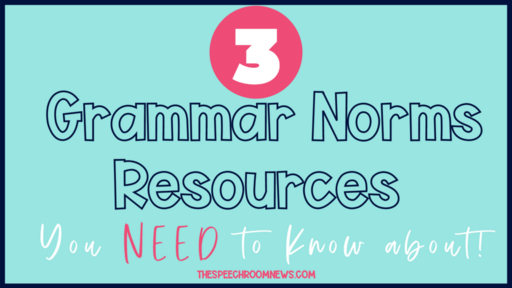
Today I want to share and break down 3 grammar norms resources that you NEED to know about as an SLP-especially because they are all evidence-based practices!
In the last year, I’ve bookmarked and used some amazing resources and I also wanted to share my go-to favorites!
#1 The Grammar Guide You Never Knew You Always Wanted
(from The Informed SLP)
One mega spreadsheet of evidence-based information for grammar! The folks over at The Informed SLP have gathered so much information in one place!
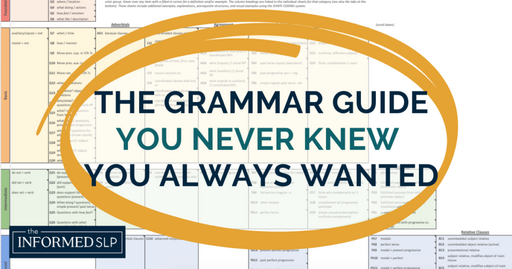
This Grammar Guide is best used for its Grammatical Concepts of English and the Suggested Order of Intervention. This was created by SLPs who shared their best guess at a likely order of treatment within each of several syntactic domains. The first tab of the spreadsheet provides an overview of all the areas covered within each domain of morpho-syntax. If you hover your cursor over an item, you will see a pop-up note with a definition and/or example of that structure. Each column on the first tab then has its own tab (also linked from the column headings), which provides the same order with more details, including more examples of each structure type, any prerequisite structures, and notes about things to consider.
What the color-coding means: The purpose of the colors is to aid decisions about how to order or combine across tabs, though we view these color-coded divisions as somewhat more disputable.
- Red: foundational. Get these basic components in place before teaching anything else.
- Amber, Green, Blue: cross-domain groupings for things that might warrant attention before moving onto the next color block.
Some important things to remember when looking at this spreadsheet:
- Some precursor skills may be required or may help link two areas.
- Consider targeting academically relevant syntax even if morphology isn’t yet perfected.
- Comprehension is at least as important as production.
- Generalization across structures is limited.
- Focus on functional implications and be flexible!
*This spreadsheet is for the English language.
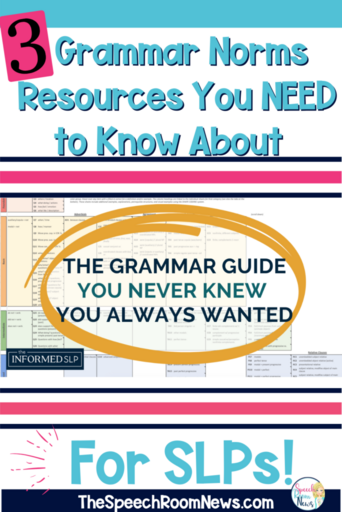
#2 Guide to Communication Milestones
(FREE and VERY-detailed resource!)
This guide created by LinguiSystems is wonderful because it is very extensive and detailed and focuses on the following skills:
-Concepts
-Feeding
-Morphology
-Literacy
-Mean Length of Utterance
-Phonological Awareness
-Pragmatics
-Pronouns
-Questions (Asking and Answering)
-Speech Sound Acquisition
-Vocabulary
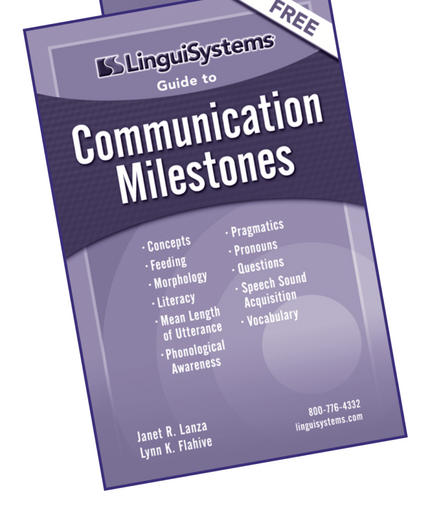
This guide was written by 2 SLPs who both have over 25 years of experience. Janet Lanza and Lynn Flahive break down specific questions that both parents and SLPs have when working with children with communication disorders, such as:
- When should I expect my child to say two-word phrases, produce consonant clusters, or follow two-step directions?
- Does this client have the speech and language skills that are expected at his age?
These are often questions asked of Speech Language Pathologists. Research shows that typical speech and language development follows a predictable progression. SLPs must familiarize themselves with the steps in this progression to provide the most effective therapy for clients and to give honest, research-based information to their families.
This Guide to Communication Milestones is by far the most extensive out of the 3 resources discussed today. It goes into great length showing charts and stages for each of the 11 topics above. I love to refer to this resource when I am asked about feeding or pronouns as an SLP and what is age appropriate. Take some time to look through it and I think you will see how helpful it can be for SLPs also!
#3 Brown’s Stages of Syntactic and Morphological Development
The final resource for grammar norms that I am sharing today is Brown’s Stages of Morphological Development. These stages are found on speech-language-therapy.com (a website created by Dr. Caroline Bowen, PhD). “Brown’s Stages” were identified by Roger Brown 1925-1997, and described in his classic book (Brown,1973). The stages provide a framework within which to understand and predict the path that normal expressive language development in English usually takes, in terms of morphology and syntax. They are used extensively by speech-language pathologists /speech and language therapists when they perform a structural analysis of a sample of a child’s spoken language.
Brown states that between 12- 26 months, children are expected to have mean length of utterances (measured in morphemes) of about 1.75 morphemes. Their MLUm’s gradually increase as they acquire more language. This stage is considered stage 1 and they produce the sentence types outlined below:
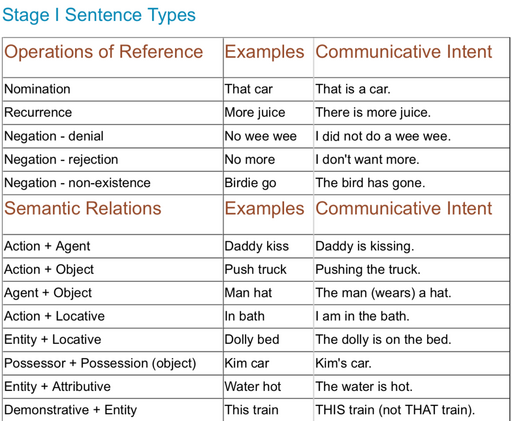
Brown’s Stages of Syntactic and Morphological Development go up to stage IV. They move from stage to stage as their MLU increases.
I want to know what grammar norms resources you use that are evidence-based practice and if the ones listed above were helpful for you? Please let me know below!
Join the SRN newsletter!

I'm so glad you stopped by! If you'd like to keep up with the newest posts and get exclusive free downloads, please sign up for the newsletter! Your first freebie is ready as soon as you subscribe and confirm your email!

Leave a Reply